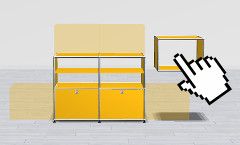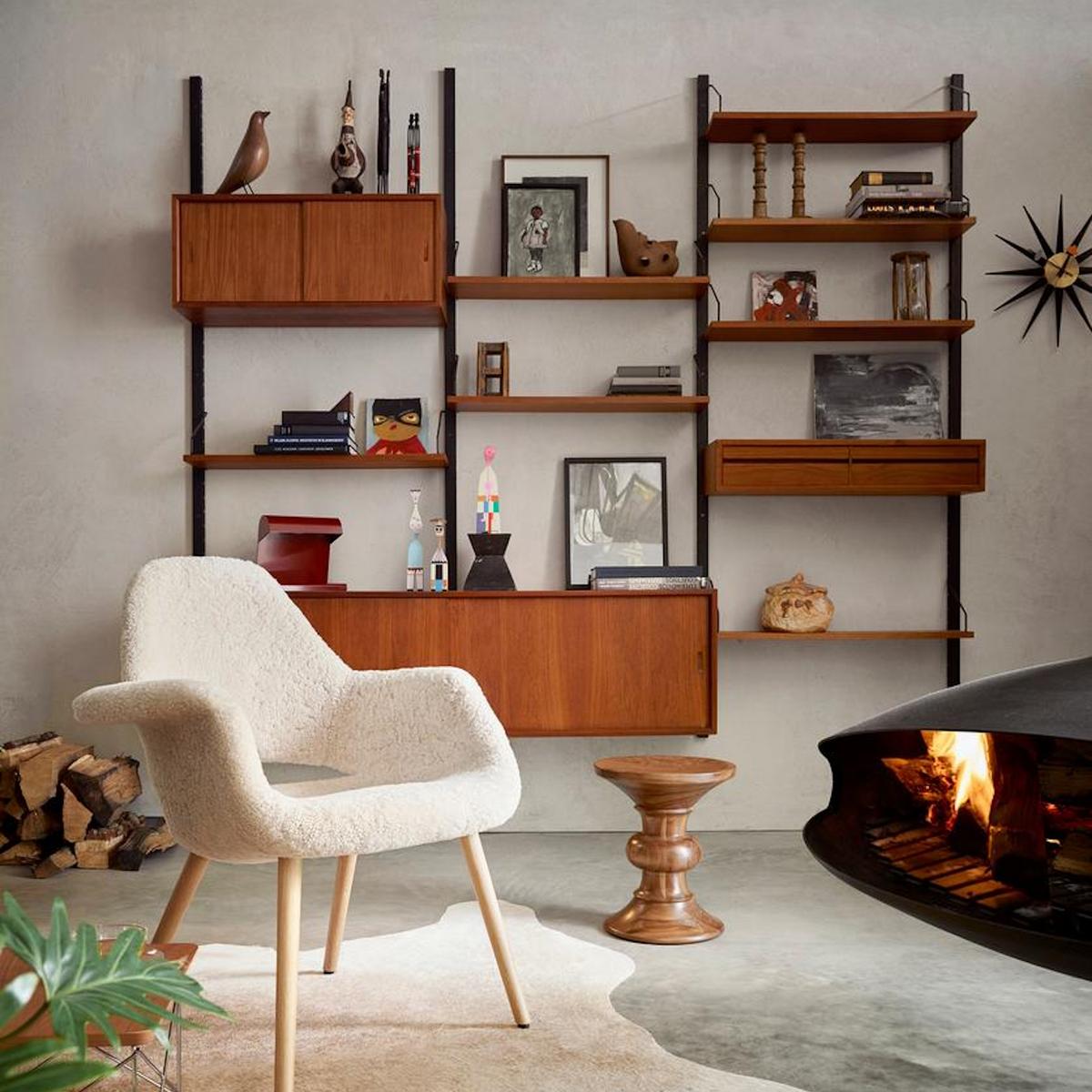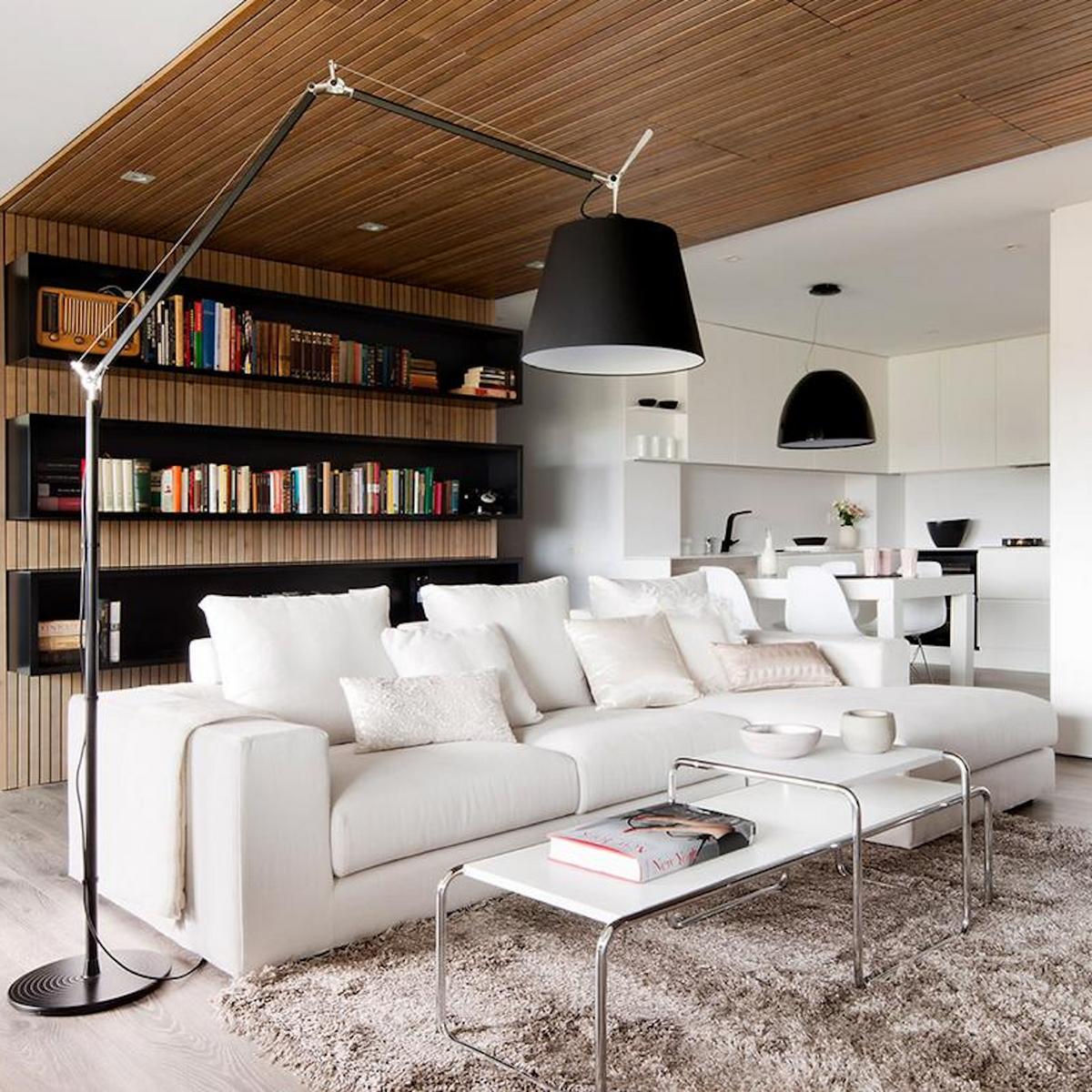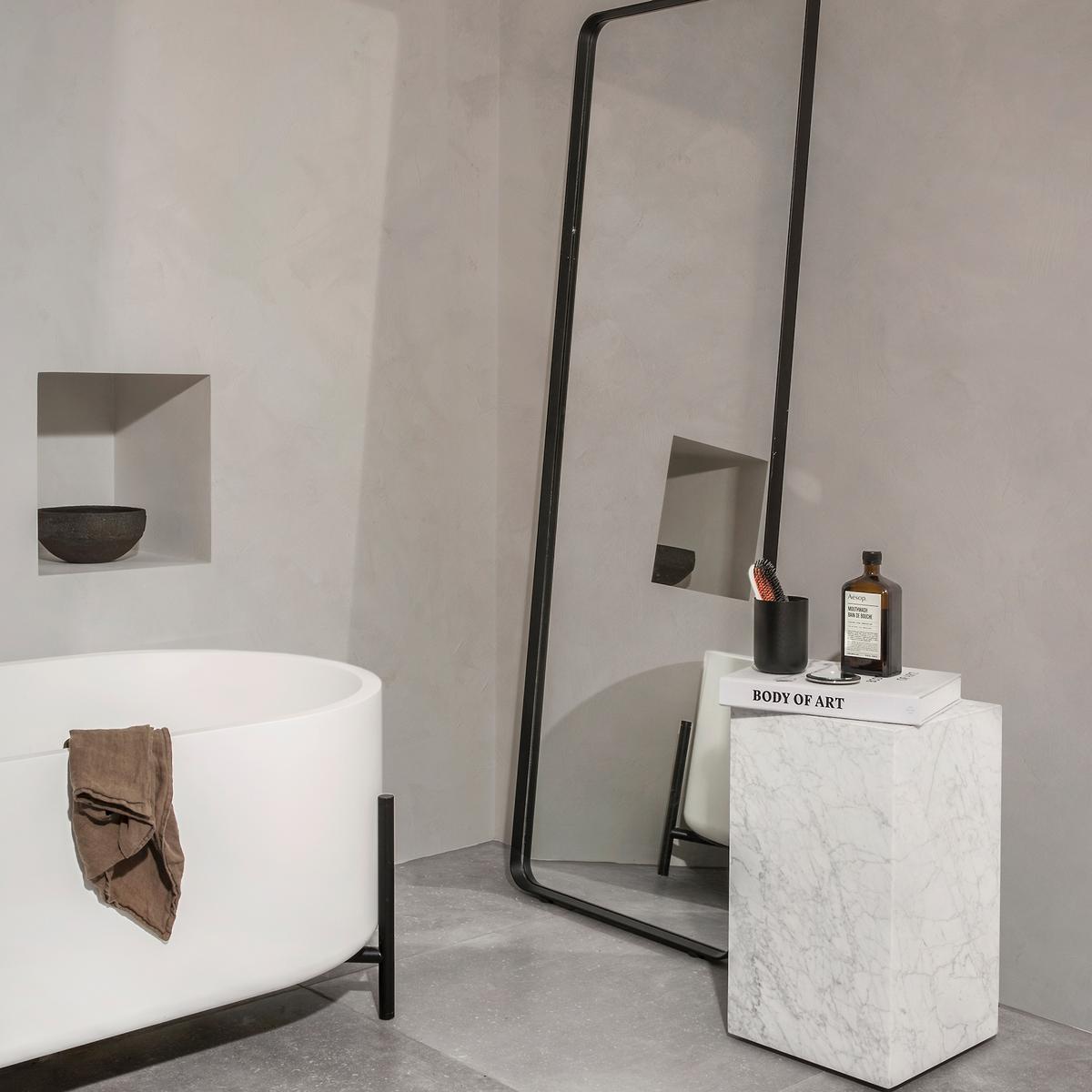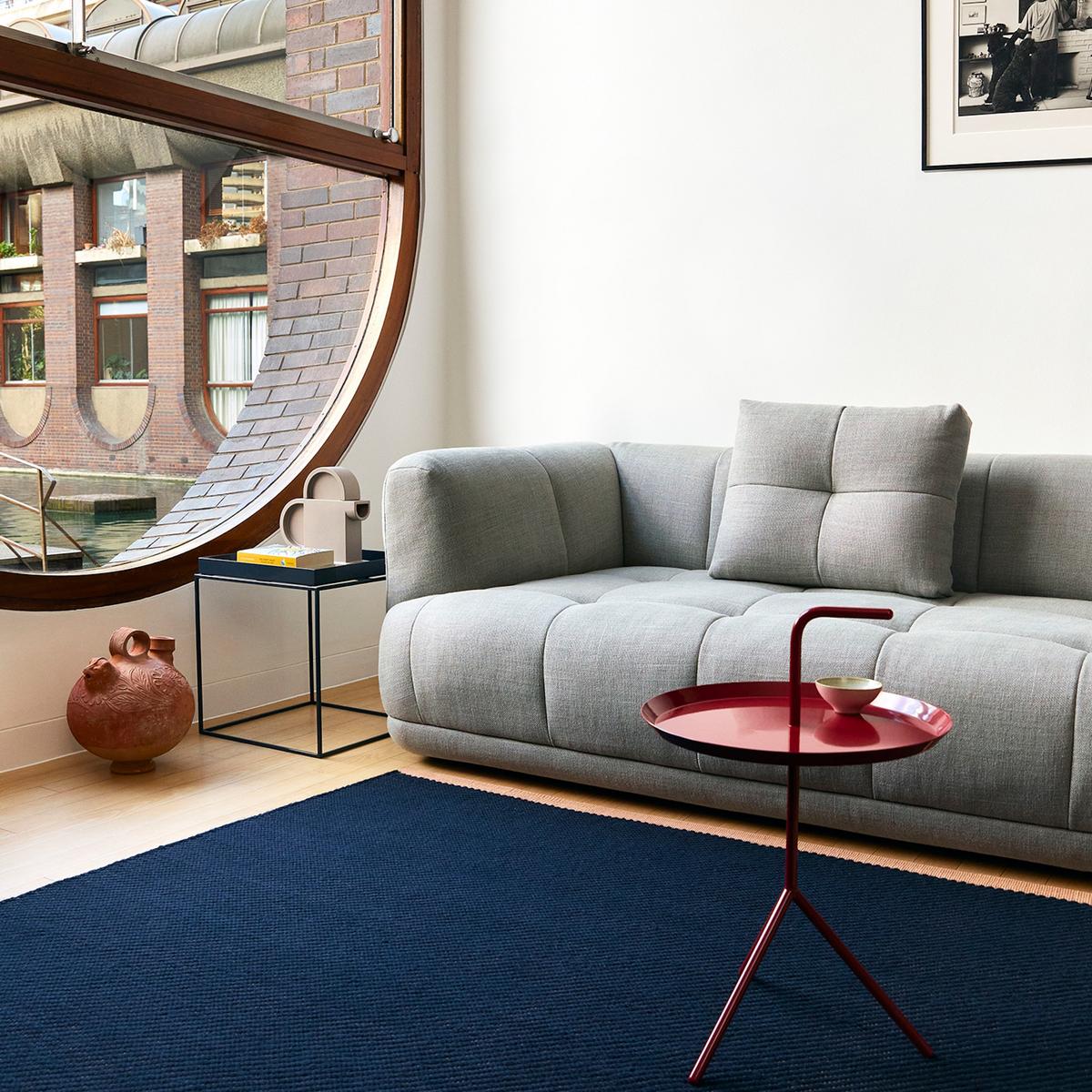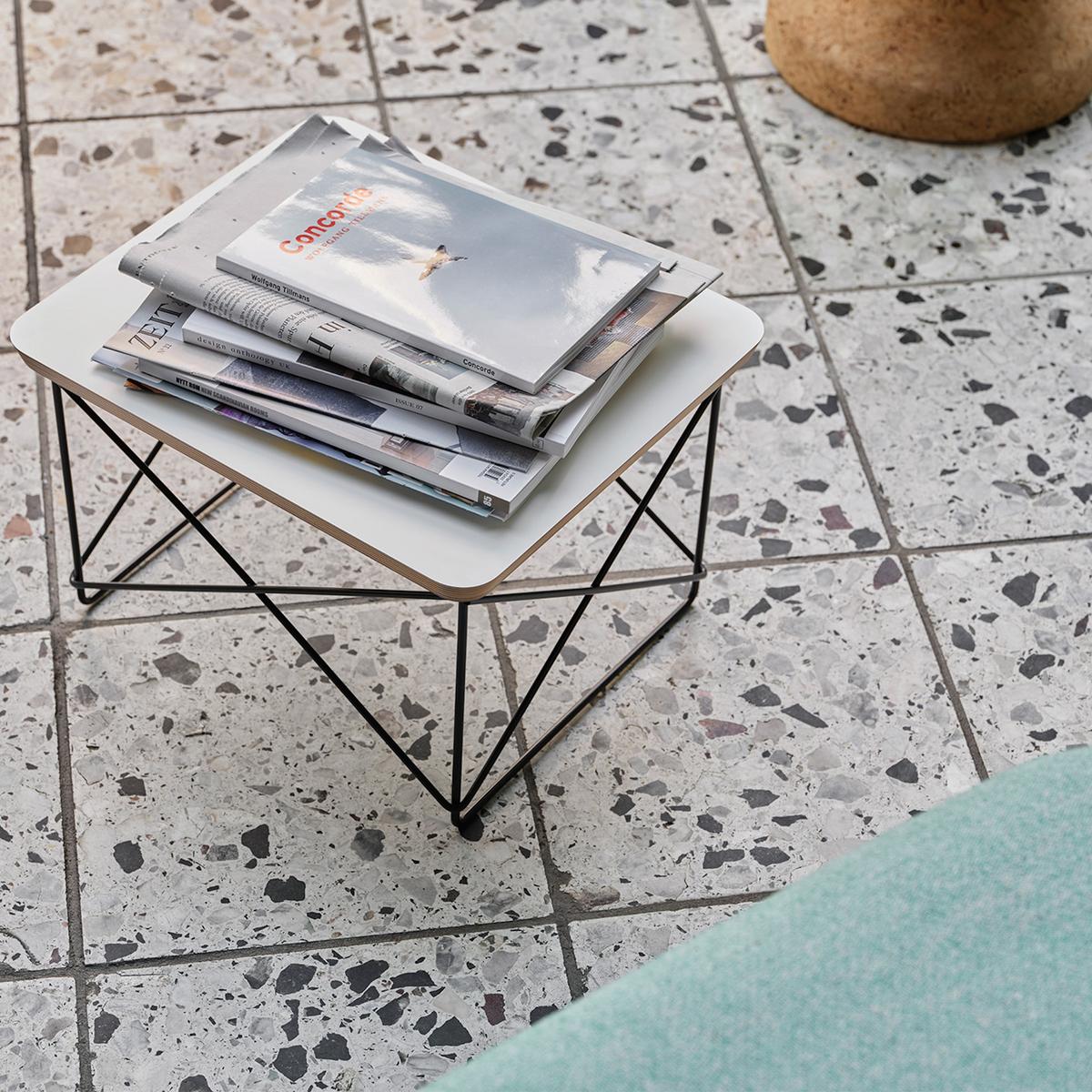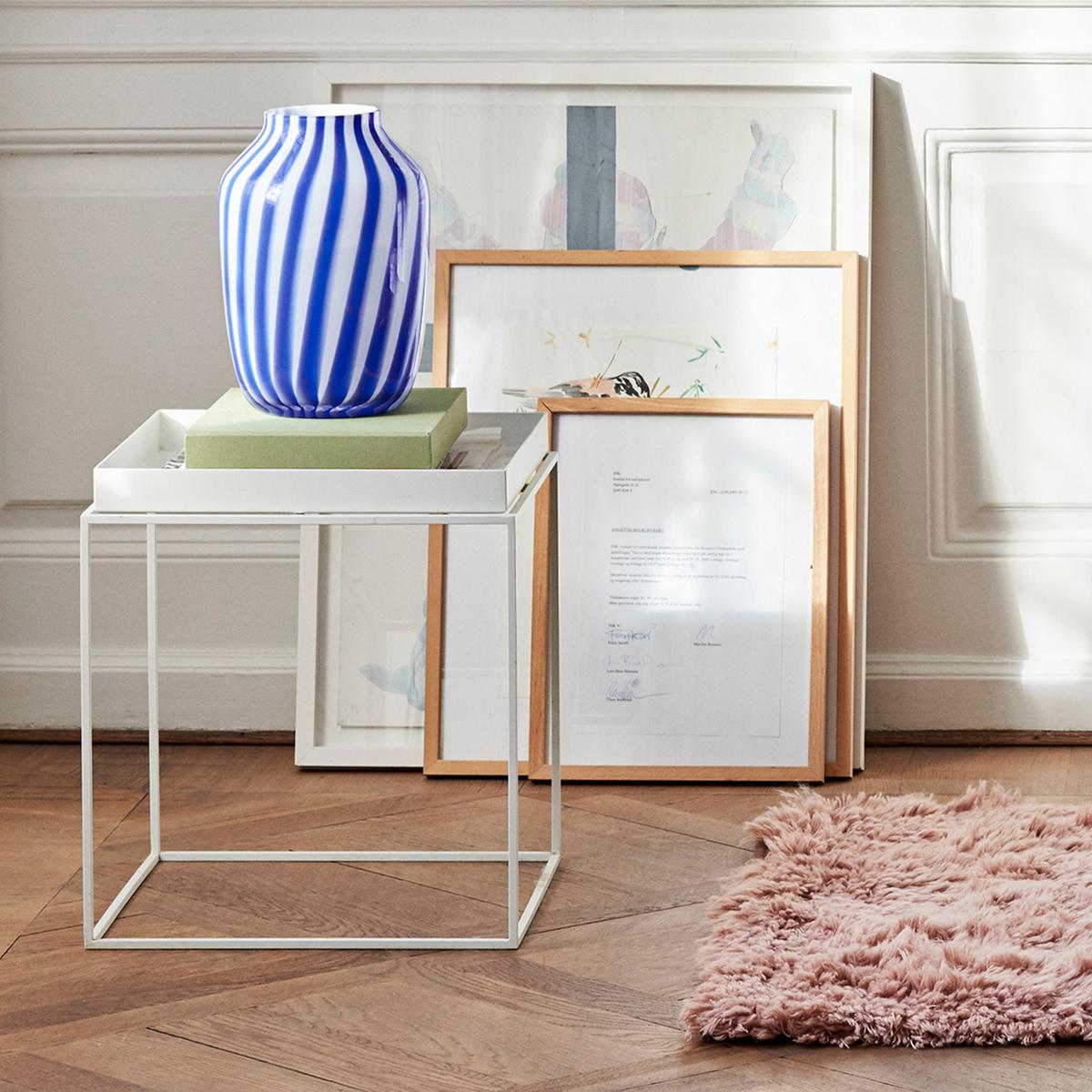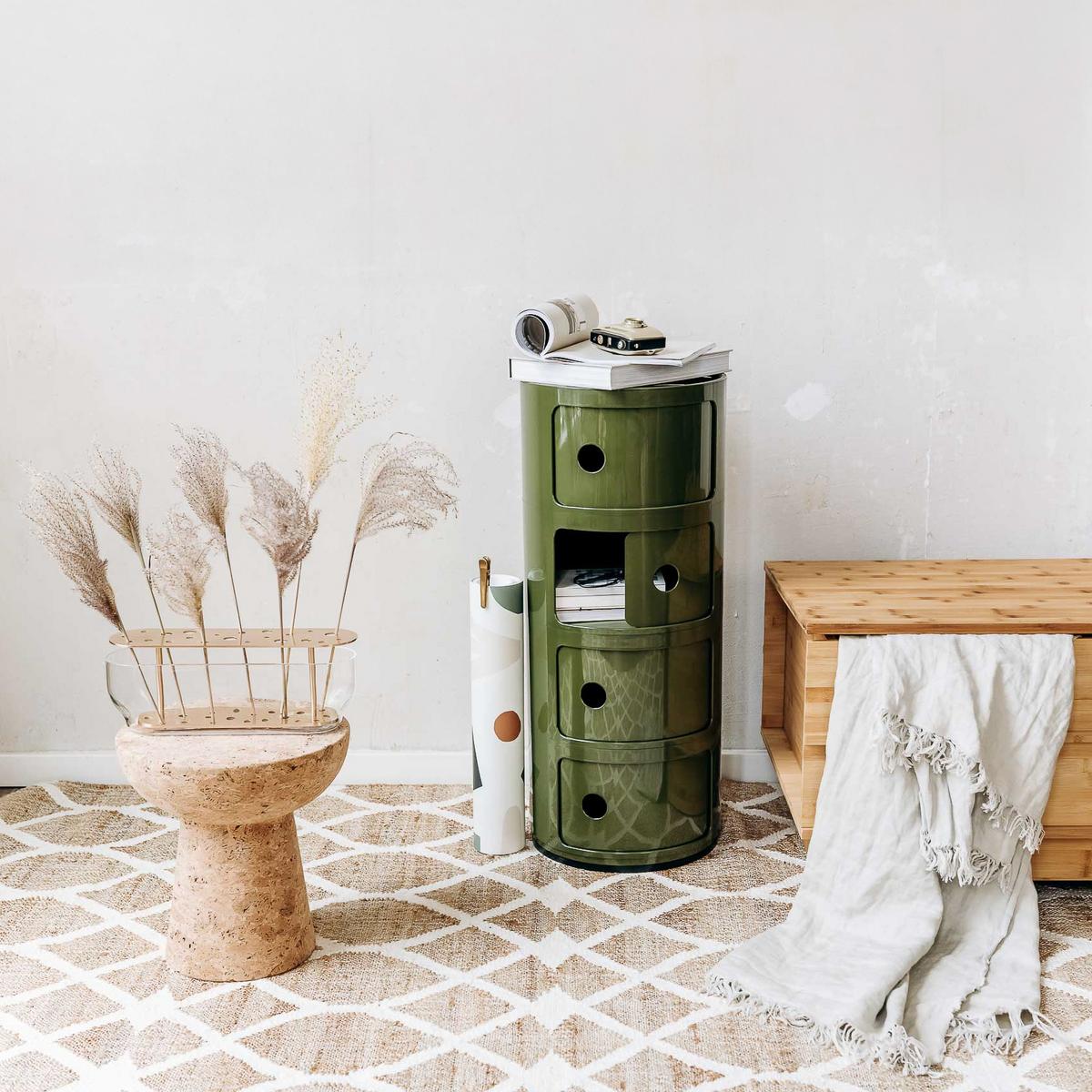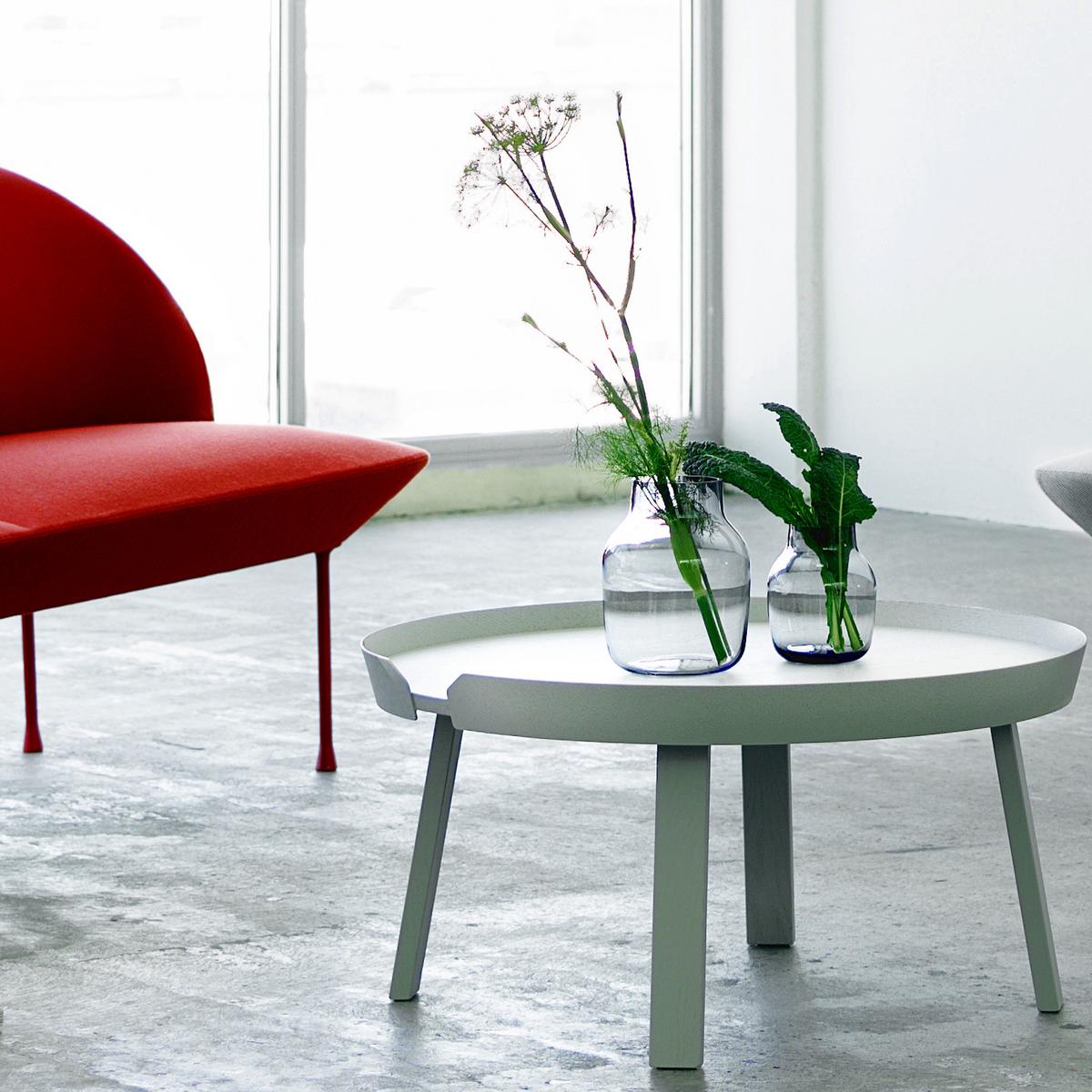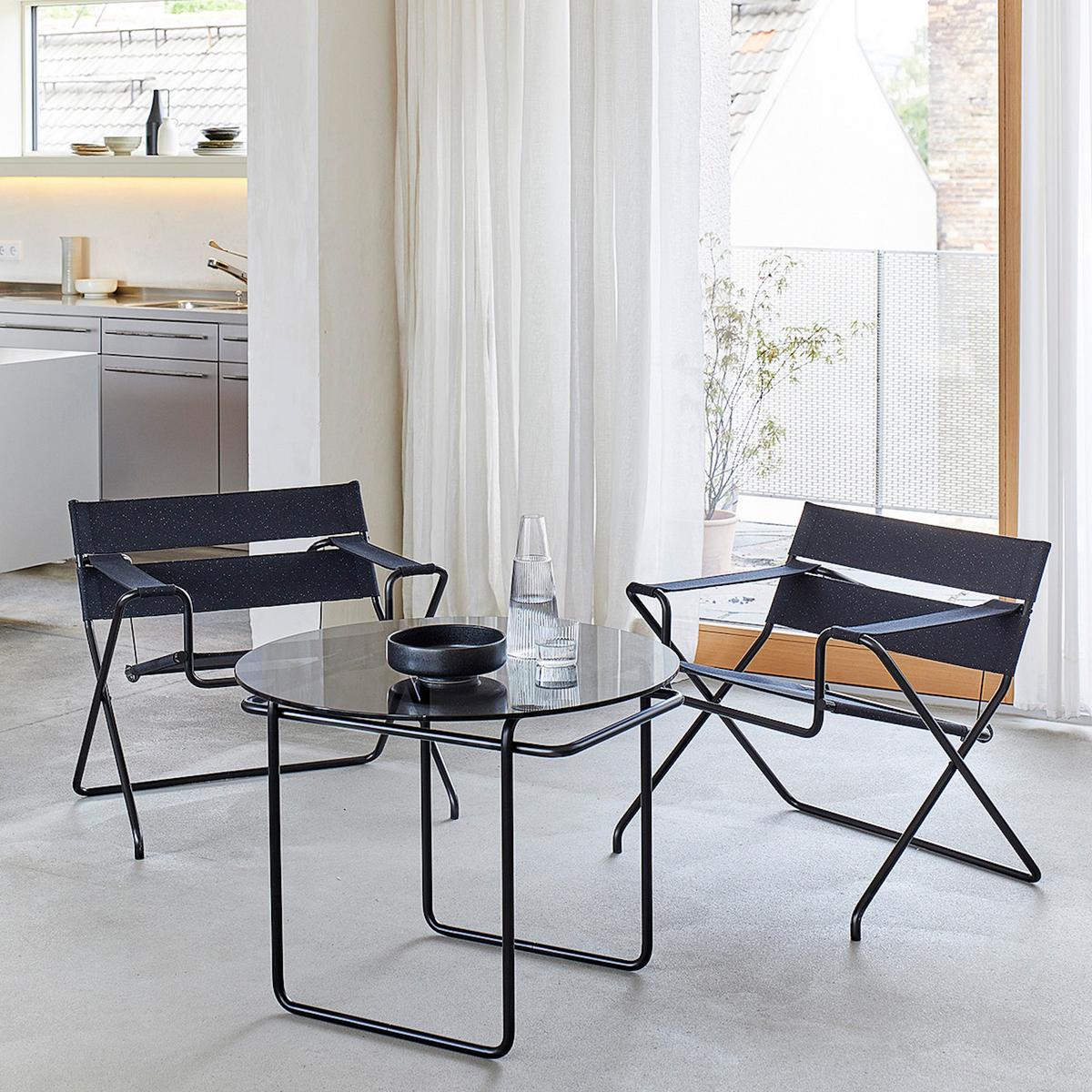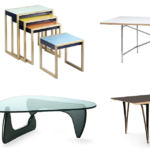Which material for your style of living?
Designer side tables are crafted from a wide range of materials, each of which have special properties and their own aesthetic impact.
Wood: Side tables made of wood always have a cosy, warm and timeless aesthetic. Different types of wood such as oak, walnut, pine or teak and various finishes and colours are available, and thereby assist wood to be particularly versatile.
The Vitra Stools by Ray and Charles Eames, for example, are crafted from solid, clear-lacquered, walnut and look particularly elegant while, thanks to the individual nature of the wood, are sculptural as much as practical. The amount of care required for wooden side table differs depending on the surface quality and processing of your wooden side table. The manufacturers provide the appropriate care instructions here.
Metal: Metallic materials such as steel, aluminium or brass are often used for modern or minimalist designs. They bequeath the side tables a sleek and contemporary look. Amongst the metal design classics one find models made of curved, chrome-plated tubular steel, such as the Thonet side tables by Marcel Breuer.
Glass: Glass is often used as a table top, either transparent or satin finished. Glass gives side tables an elegant and airy aesthetic and compliments many different interior styles. The designer Sebastian Herkner integrated glass into his Bell Side Table for ClassiCon in a particularly clever way: the base consists of coloured hand-blown glass and the table top is made of crystal glass.

